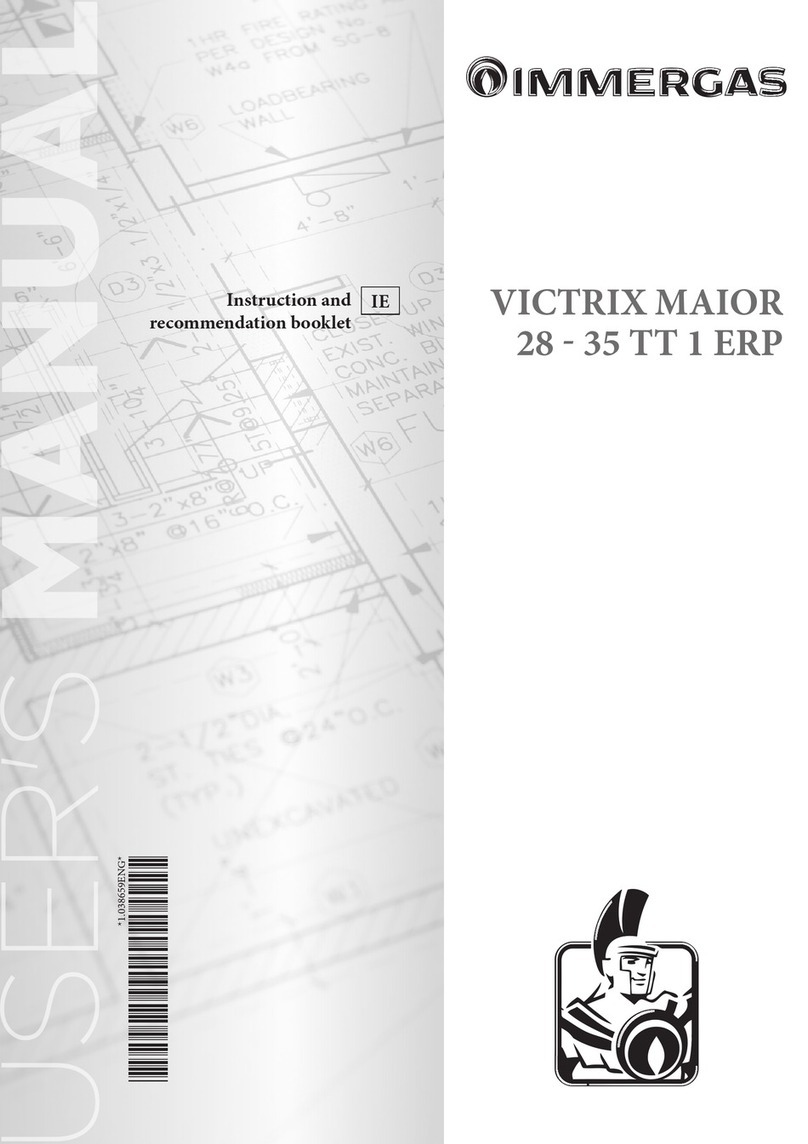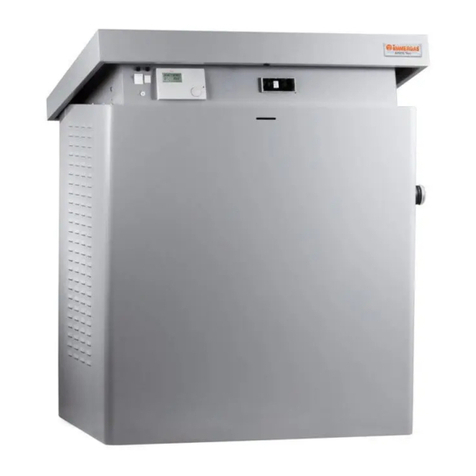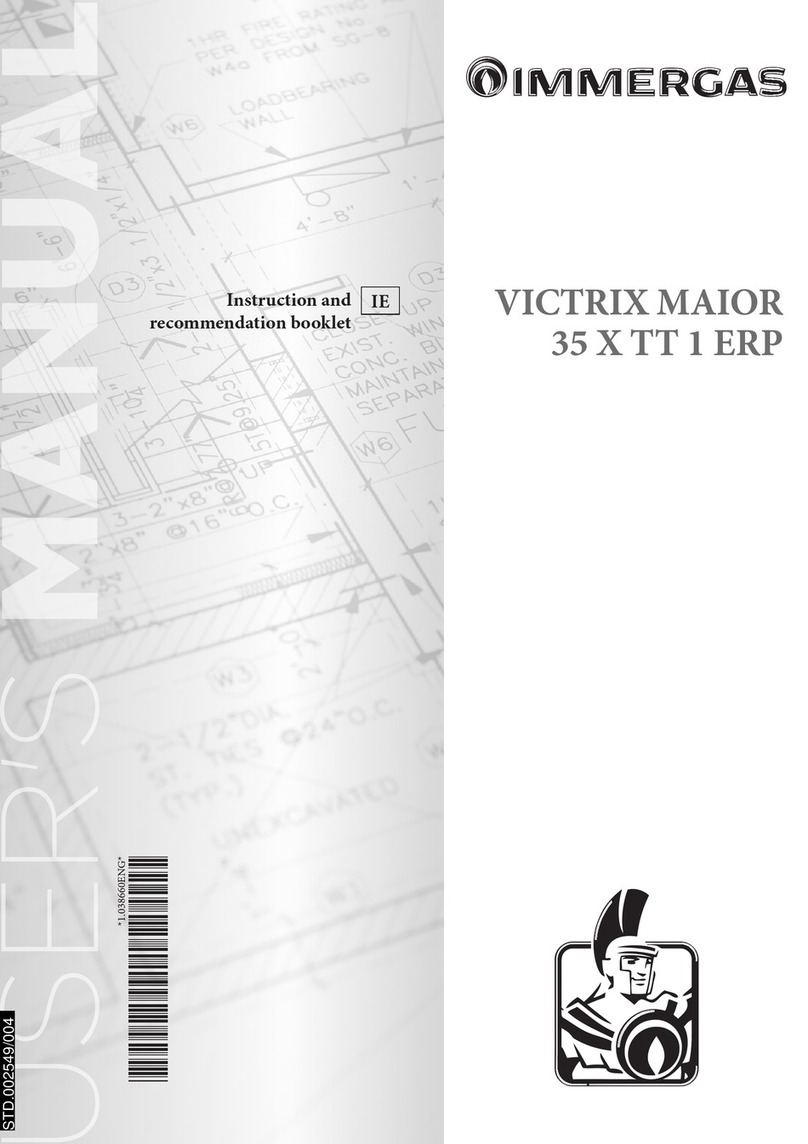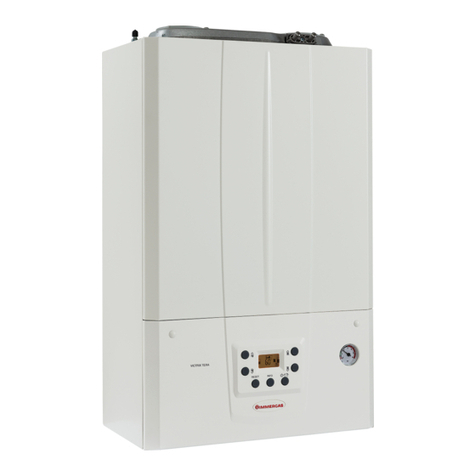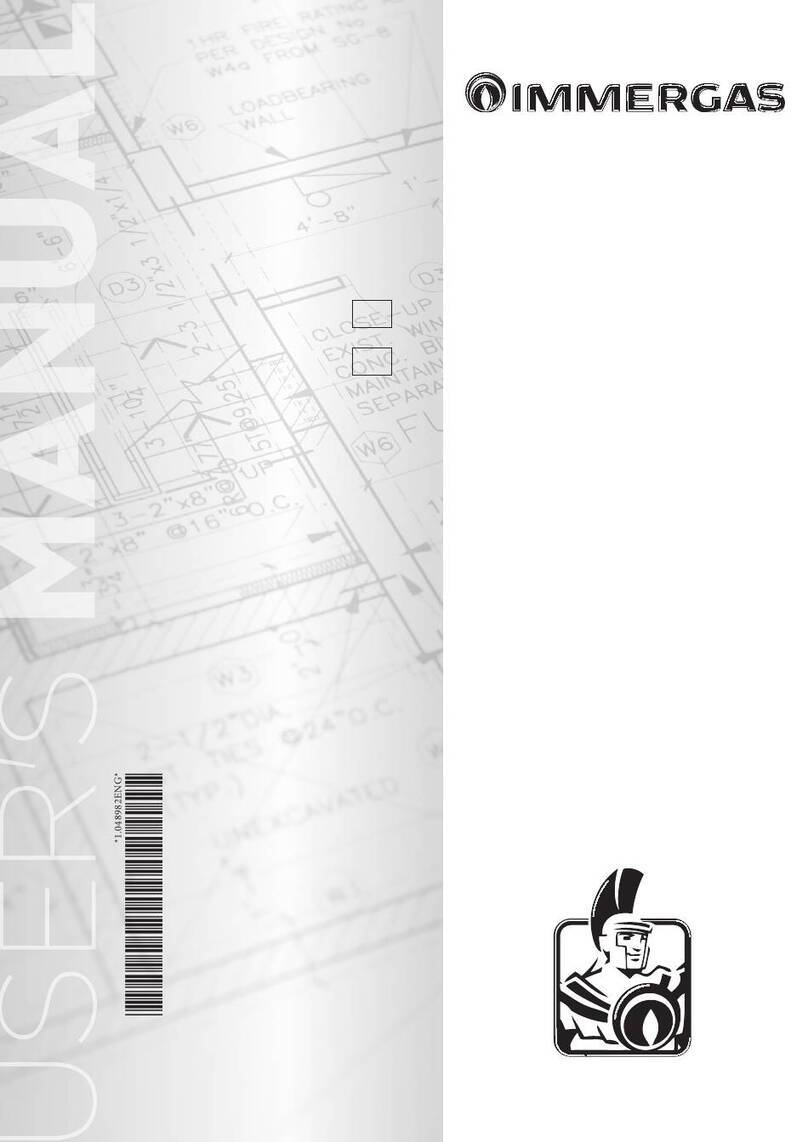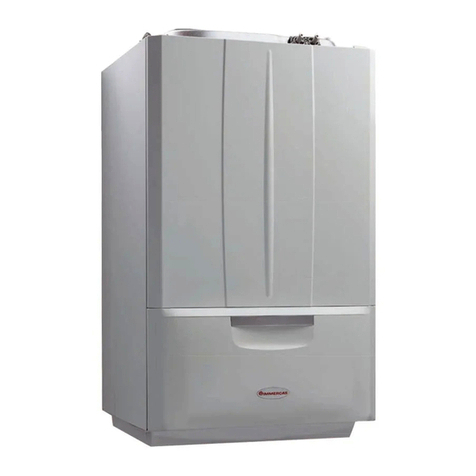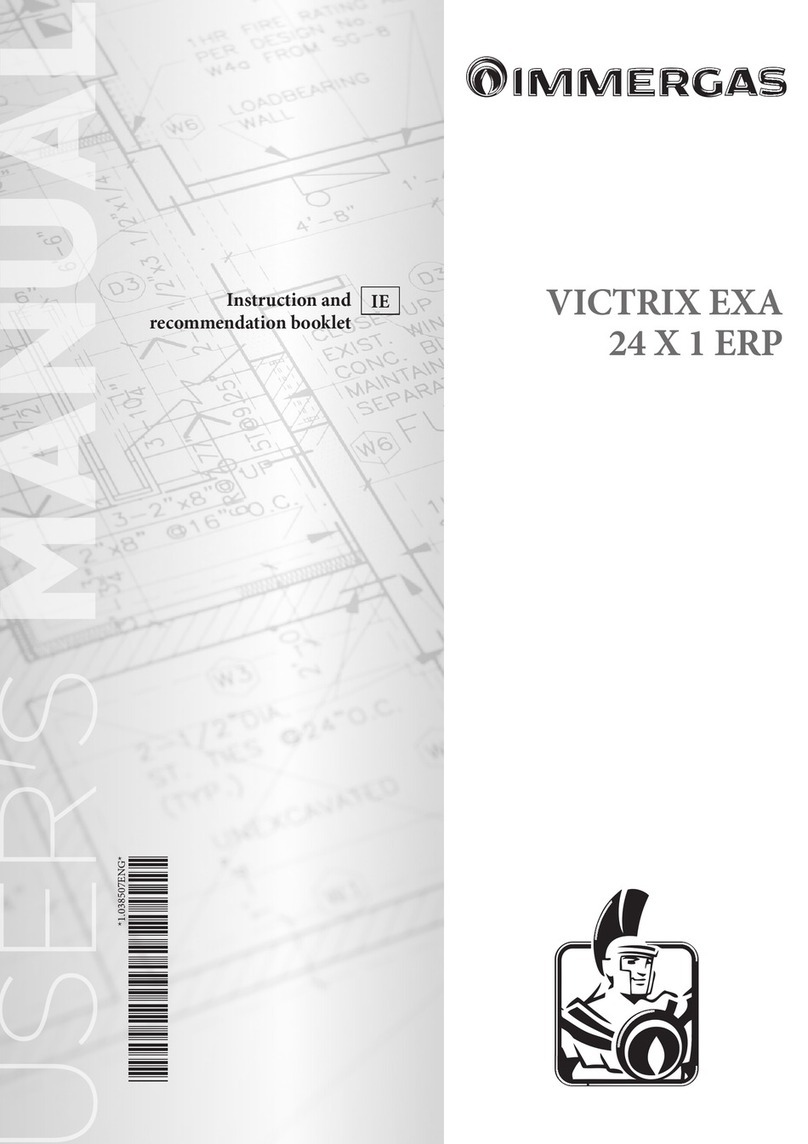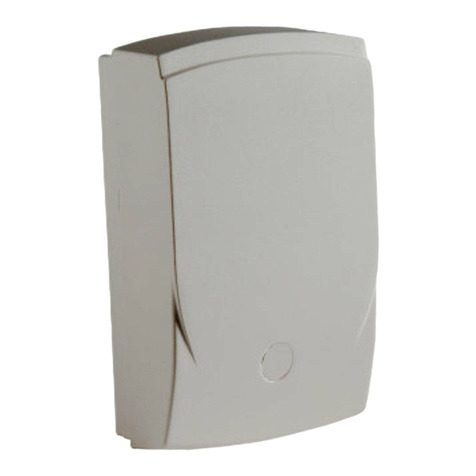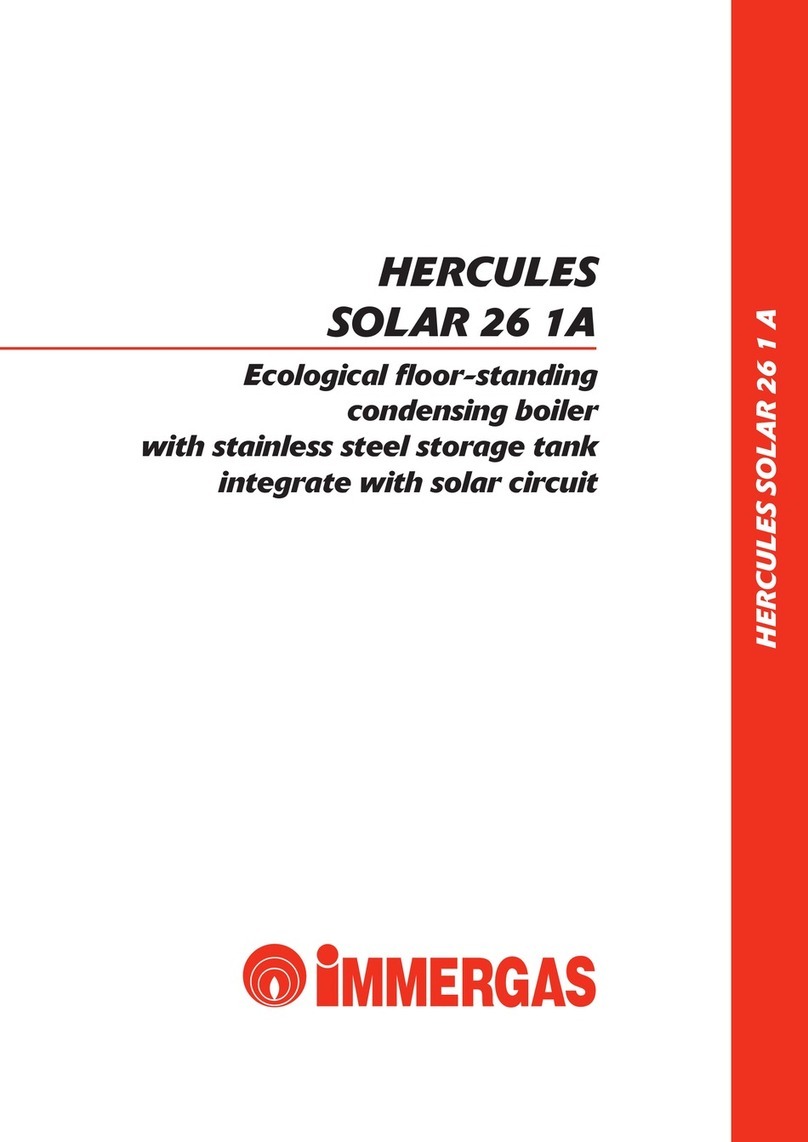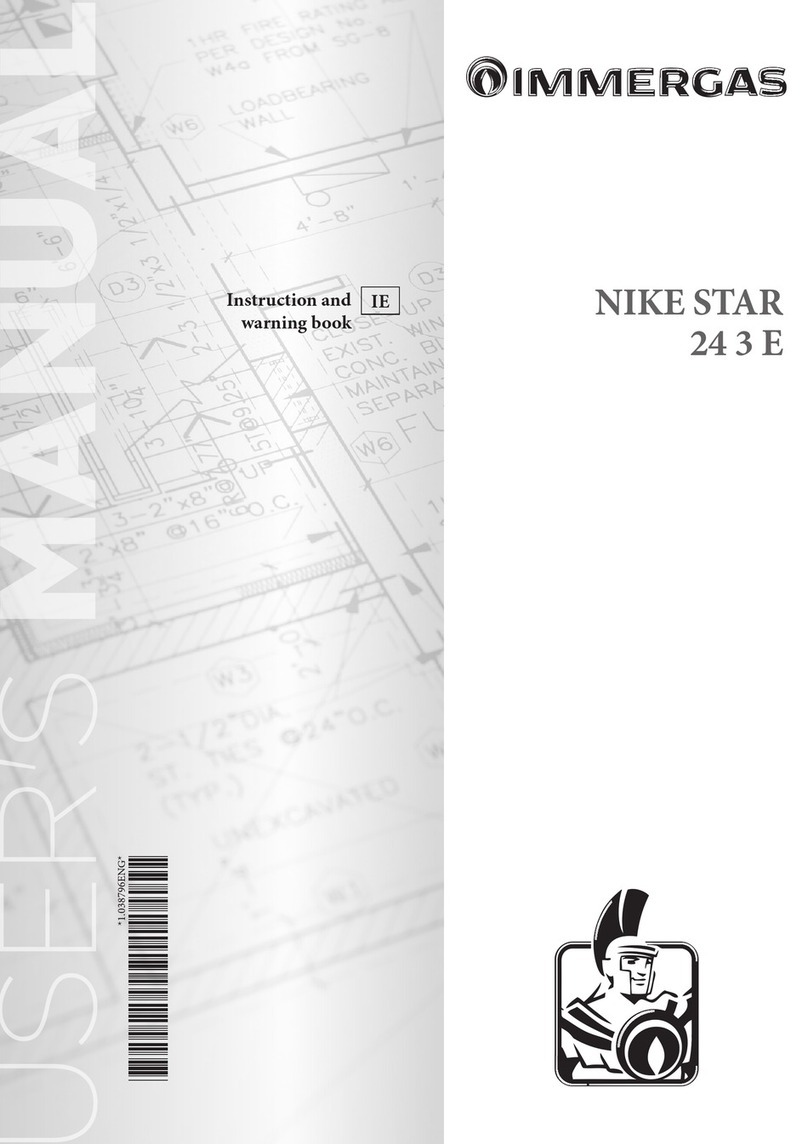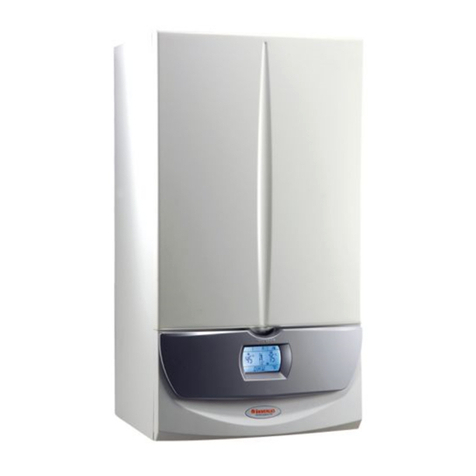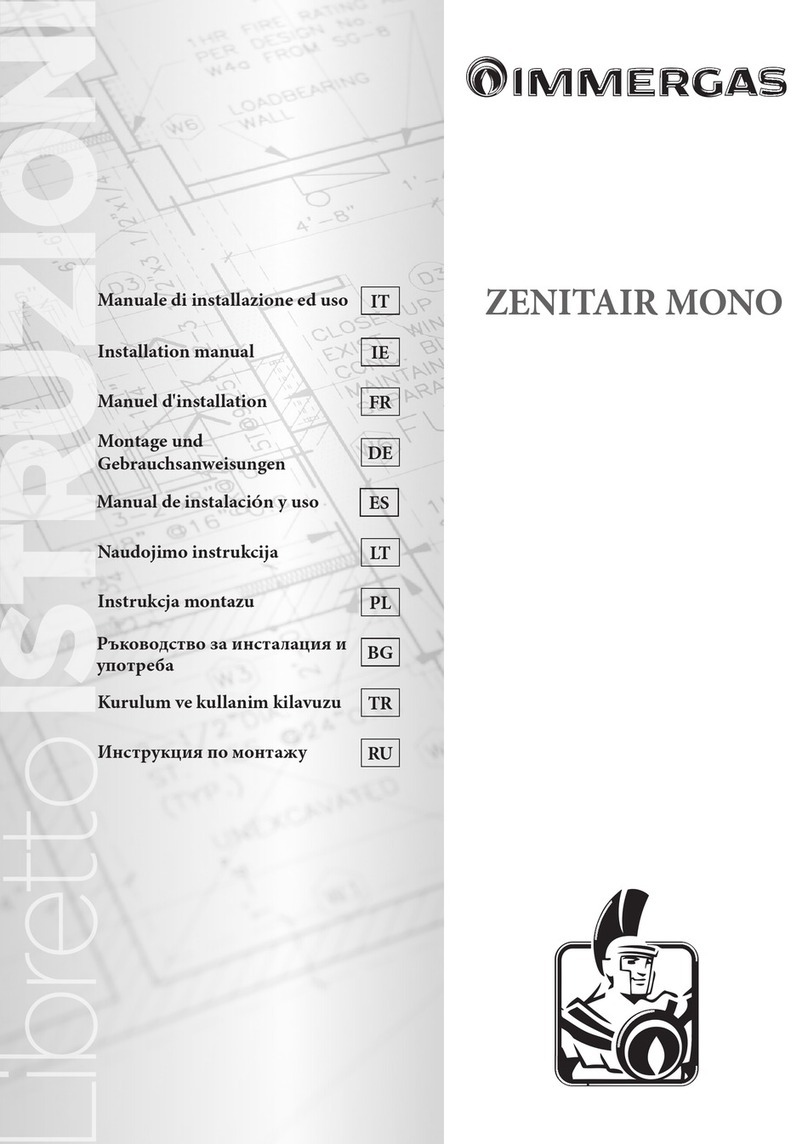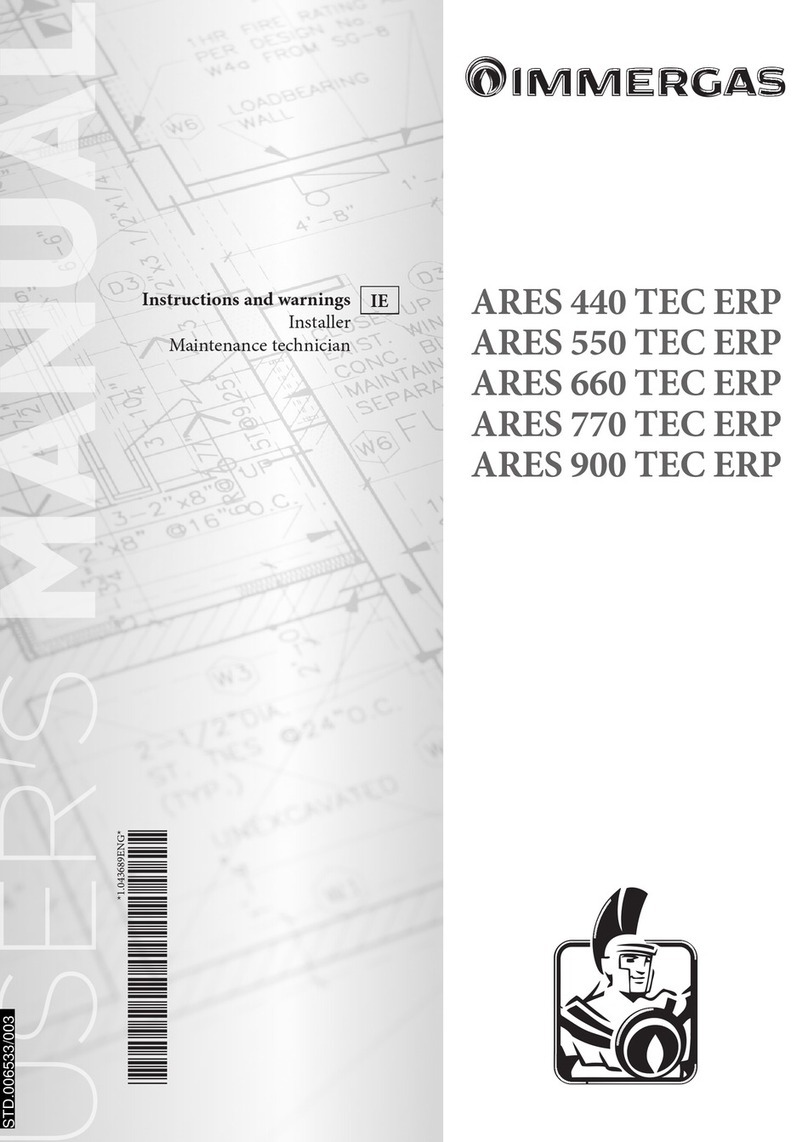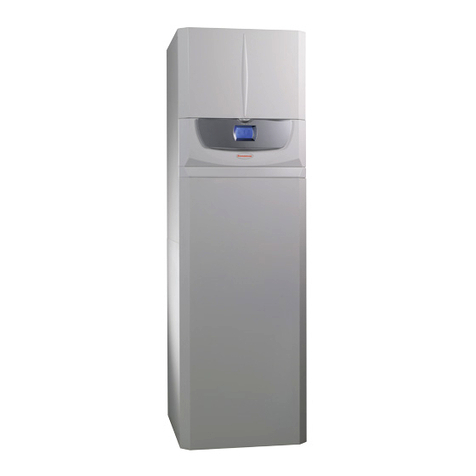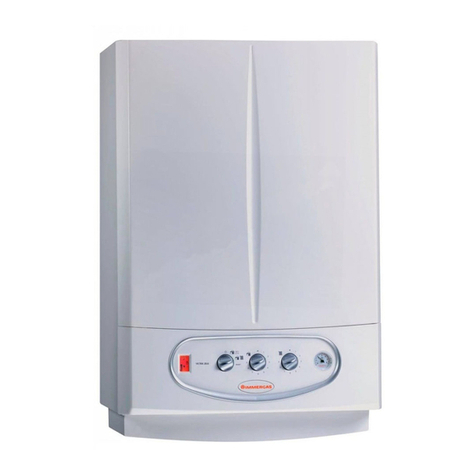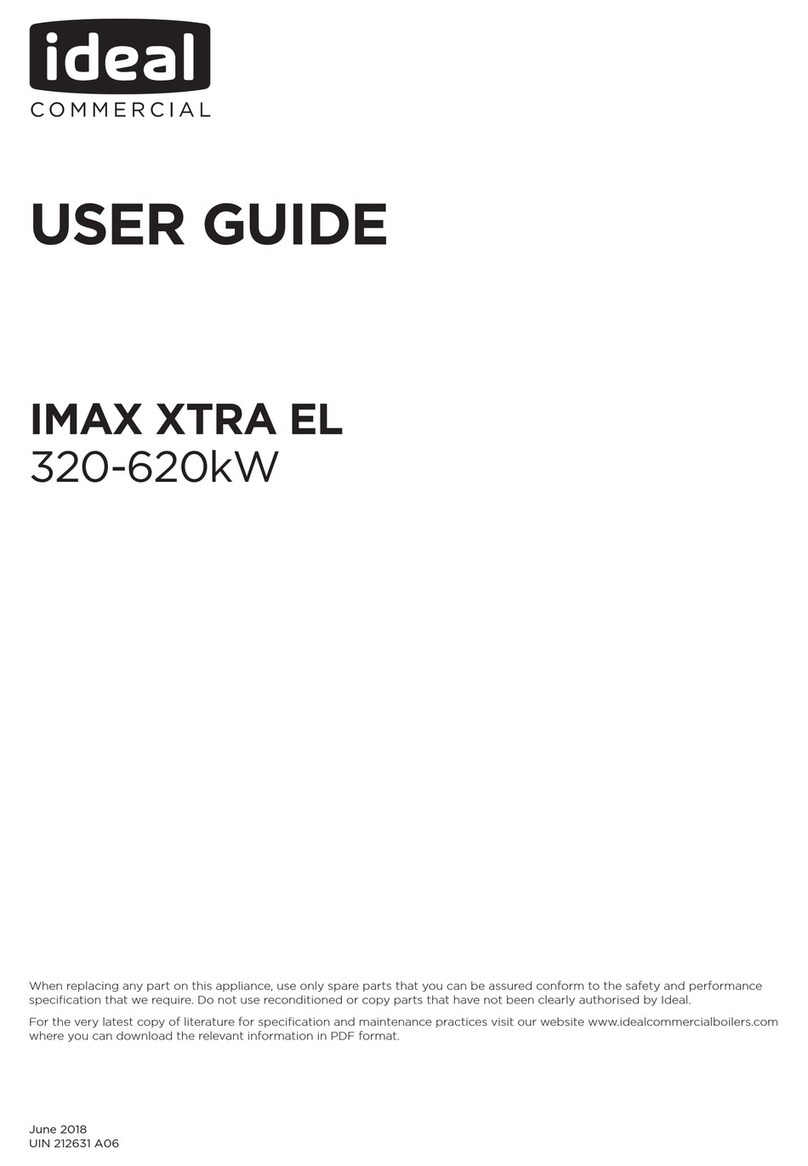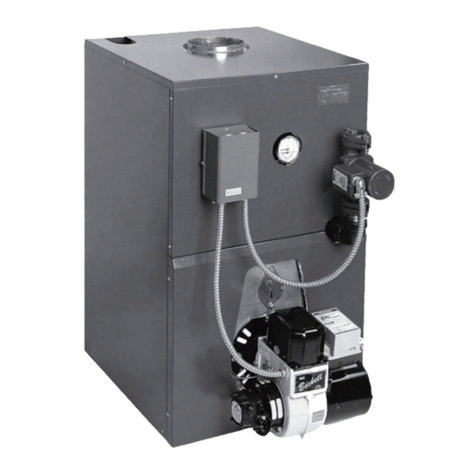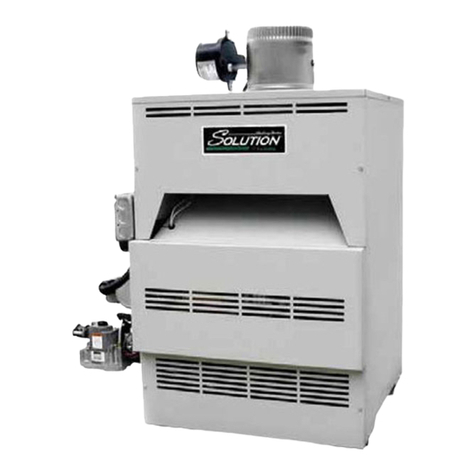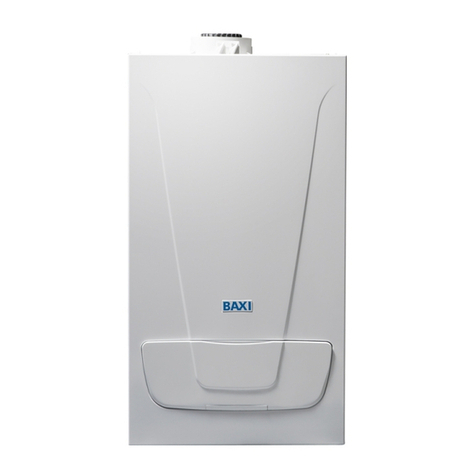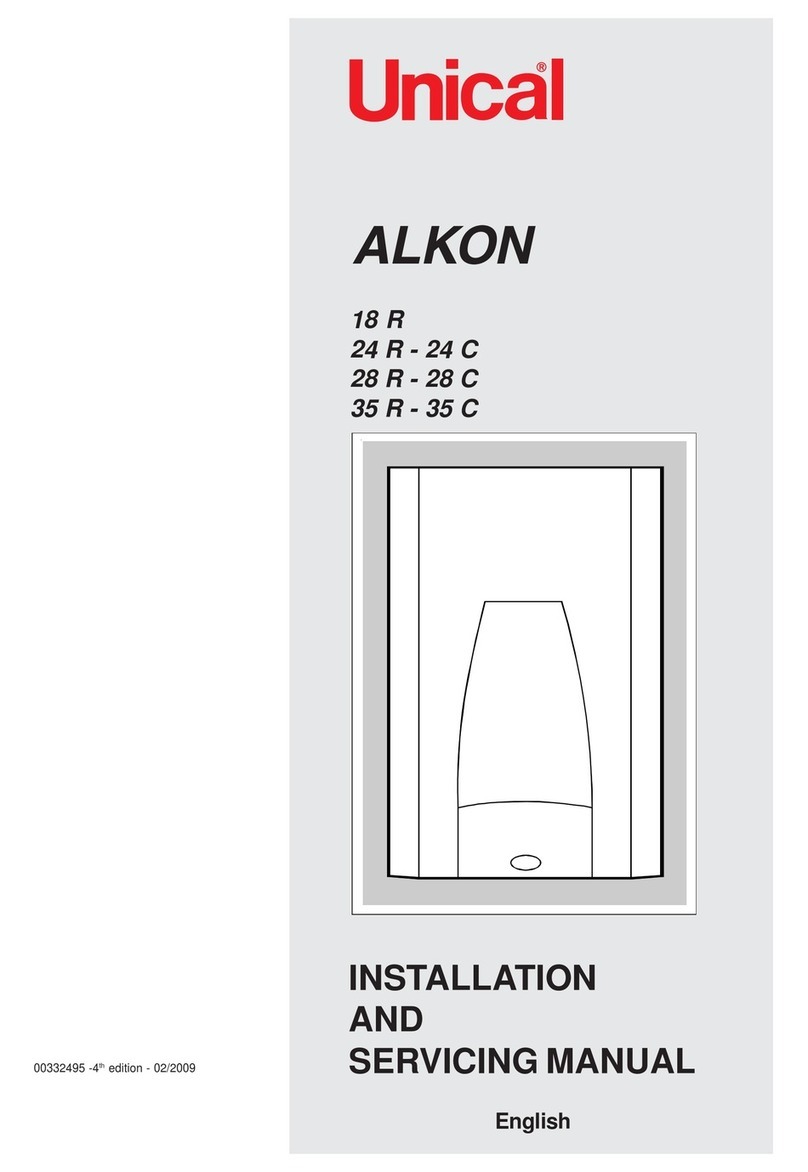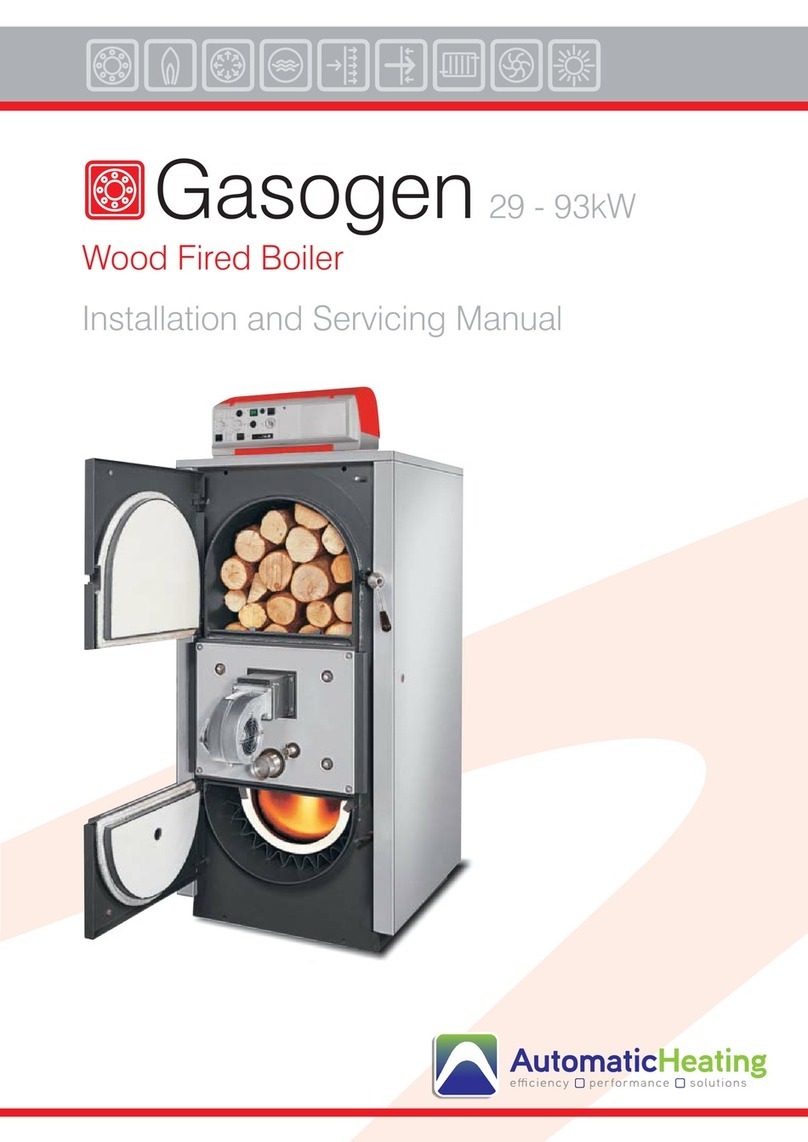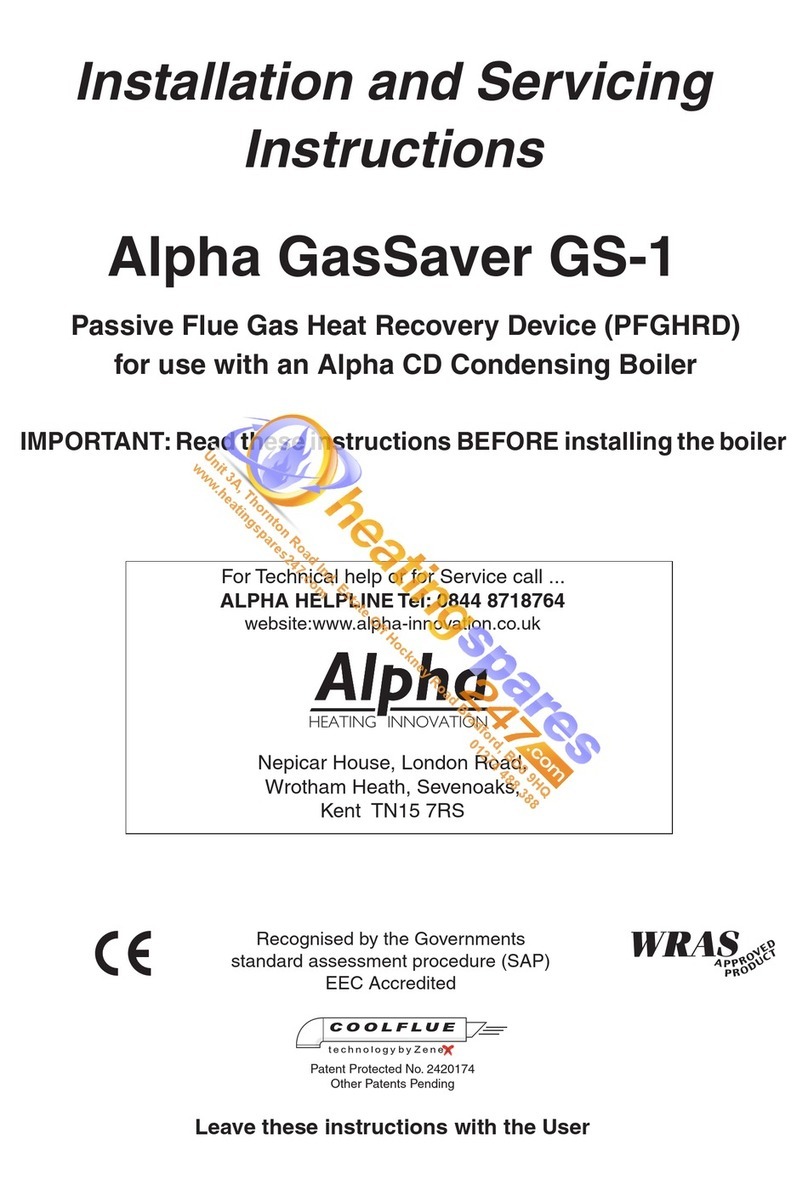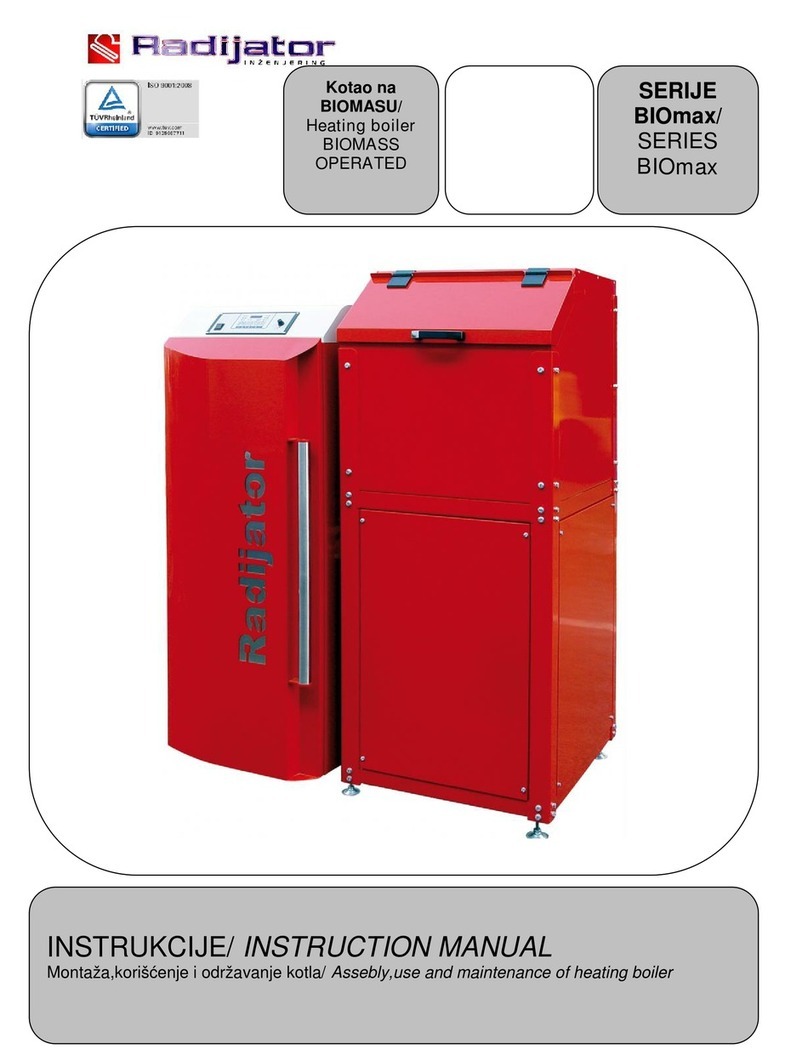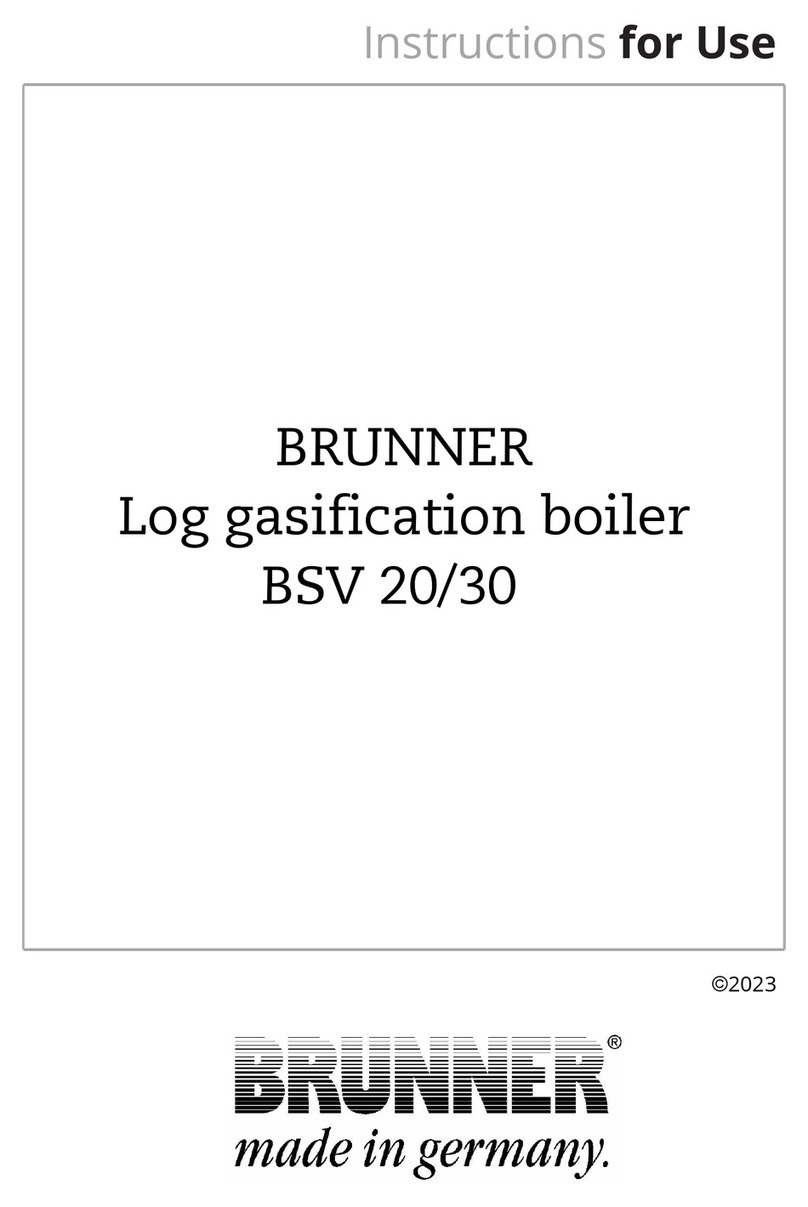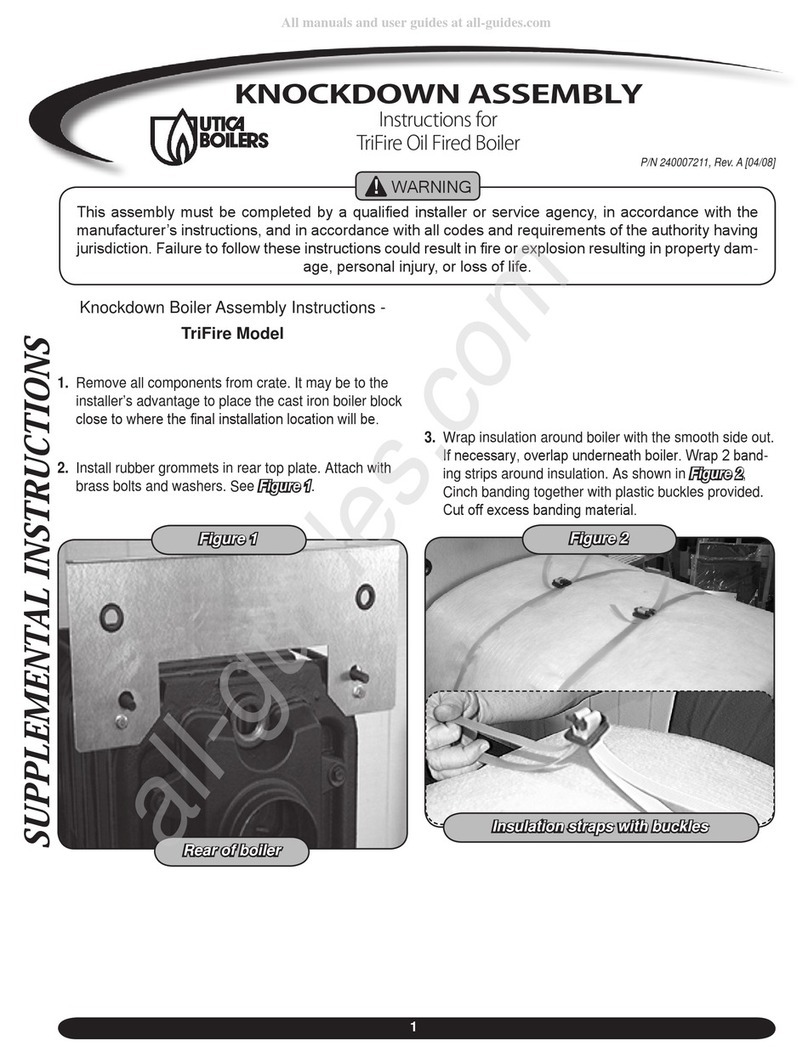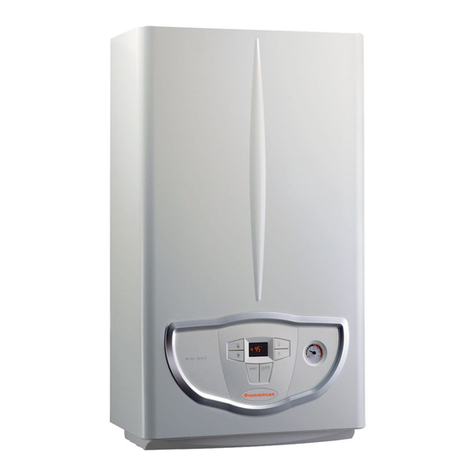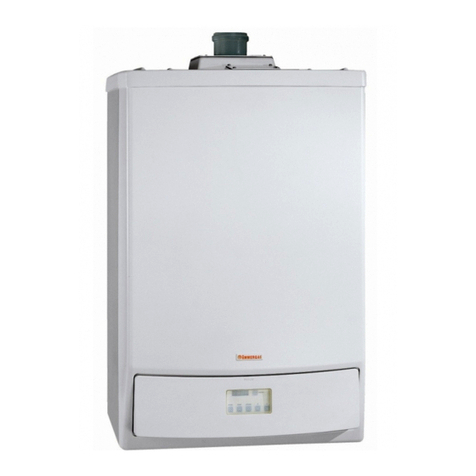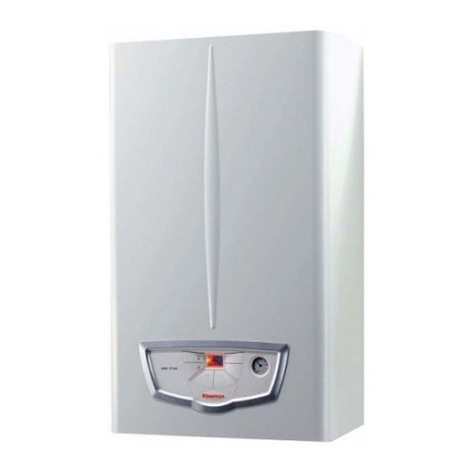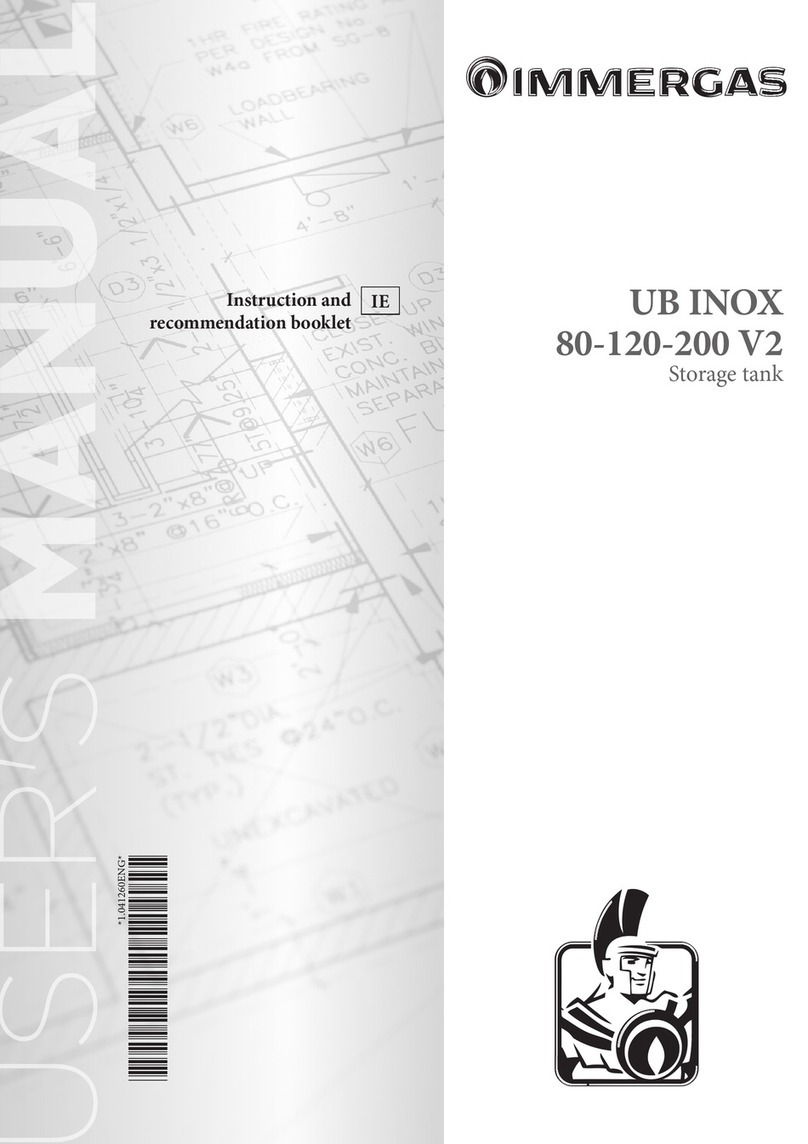
C83
1-16
10 - IE
INSTALLATORUSERMAINTENANCE
1.9 DUCTING OF FLUES OR
TECHNICAL SLOTS.
Ducting is an operation through which by the
introduction of one or more relevant pipes, a
system is realised for the evacuation of the com-
bustion products of a gas appliance made up from
the coupling of an existing or new ducting pipe
with a chimney, ue or technical slot (also in new
buildings) (Fig. 1-16). Ducting requires the use of
ducts declared to be suitable for the purpose by
the manufacturer, following the installation and
user instructions, provided by the manufacturer
and the requirements of the standards.
Immergas ducting system. e Ø60 rigid and
Ø80 exible “Green Range” ducting systems must
only be used for domestic use and with Immergas
condensing boilers.
In any case, ducting operations must respect
the provisions contained in the standard and in
current technical regulations; in particular, the
declaration of conformity must be compiled at
the end of work and on commissioning of the
ducted system. e instructions in the project
or technical report must likewise be followed, in
cases provided for by the standard and current
technical regulations. e system or components
of the system have a technical life complying with
current standards, provided that:
- it is used in average atmospheric and environ-
mental conditions, according to current regula-
tions (absence of fumes, dusts or gases that can
alter the normal thermophysical or chemical
conditions; existence of temperatures coming
within the standard range of daily variation,
etc.).
- Installation and maintenance must be perfor-
med according to the indications supplied by
the manufacturer and in compliance with the
provisions in force.
- e max. possible length of the Ø 60 exible
ducting vertical section is equal to 22 m. is
length is obtained considering the complete Ø
80 exhaust terminal, 1m of Ø 80 pipe in exhaust,
two 90° Ø 80 bends at boiler outlet.
- e max. possible length of the Ø 80 exible
ducting vertical section is equal to 30 m. is
length is obtained considering the complete
exhaust terminal, 1m of Ø 80 pipe in exhaust,
two 90° Ø 80 bends at boiler outlet for connec-
ting to the ducting system and two direction
changes of the exible tube inside the ue/
technical hole.
- e max. possible length of the Ø 80 exible
ducting vertical section is equal to 30 m. is
length is obtained considering the complete
exhaust terminal Ø80, 1m of Ø 80 pipe in
exhaust, two 90° Ø 80 bends at boiler outlet.
1.10 FLUE EXHAUST TO FLUE/CHIMNEY.
Flue gas exhaust does not necessarily have to be
connected to a branched type traditional ue.
e ue exhaust, for boiler clots installed in C
configuration, can be connected to a special
LAS type multiple ue. For B23 congurations,
exhaust is only allowed into individual ue or di-
rectly into the external atmosphere via a relevant
terminal. e multiple ues and the combined
ues must also only be connected to type C ap-
pliances of the same type (condensing), having
nominal heat inputs that do not dier by more
than 30% less with respect to the maximum that
can be attached and powered by the same fuel.
e thermo-uid dynamic features (ue ow
rate, % of carbon dioxide, % humidity etc....)
of the appliances attached to the same multiple
ues or combined ues, must not dier by more
than 10% with respect to the average boiler at-
tached. Multiple and combined ues must be
specially designed according to the calculation
method and requirements of the standards, by
professionally qualied technical sta. Chimney
or ue sections for connection of the exhaust
pipe must comply with requisites of technical
standards in force.
1.11 FLUES, CHIMNEYS AND CHIMNEY
CAPS.
e ues, chimneys and chimney caps for the
evacuation of combustion products must be in
compliance with applicable standards.
Positioning the exhaust terminals. e exhaust
terminals must:
- be installed on external perimeter walls of the
building;
- be positioned according to the minimum di-
stances specied in current technical standards.
Combustion products exhaust of fan assisted
appliances in open-top closed environments. In
spaces closed on all sides with open tops (ven-
tilation pits, courtyards etc.), direct combustion
product exhaust is allowed for natural draught
or fan assisted gas appliances with a heat input
range from 4 to 35 kW, provided the conditions as
per the current technical standards are respected.
1.12 SYSTEM FILLING.
Once the boiler is connected, ll the system via
the lling valve (Fig. 2-8). Filling is performed
at low speed to ensure release of air bubbles
in the water via the boiler and central heating
system vents.
e pump may be noisy on start-up due to the
presence of air. is noise should stop aer a
few minutes of functioning and however aer
having correctly bled the air contained in the
hydraulic circuit.
e boiler incorporates an automatic vent valve
positioned on the boiler pump and one positio-
ned on the hydraulic manifold. Make sure that the
hoods are loosened. Open the radiator vent valves.
Close radiator vent valves when only water
escapes from them.
Close the lling valve when the boiler manometer
indicates approx. 1.2 bar.
N.B.: during these operations, start-up the
circulation pump at intervals, acting on the
main switch positioned on the control panel.
Vent the circulation pump by loosening the front
cap and keeping the motor running and assuring
that the liquid that escapes cannot cause injury/
damage to persons/objects. Tighten the cap aer
the operation.
Important: to carry out the lling procedure
correctly, activate the “automatic vent” function,
see paragraph 3.14.
1.13 FILLING OF THE CONDENSATE
TRAP.
On commissioning of the boiler combustion
products may escape from the condensate drain;
aer a few minutes operation check that fumes no
longer escape. is means that the trap is lled
with condensate to the correct level preventing
the passage of combustion products.
1.14 GAS SYSTEM STARTUP.
To start up the system, refer to the Standard. is
divides the systems and therefore the start-up
operations into three categories: new systems,
modied systems, re-activated systems.
In particular, for new gas systems:
- open windows and doors;
- avoid presence of sparks or naked ames;
- bleed all air from pipelines;
- check that the internal system is properly sealed
according to specications.
